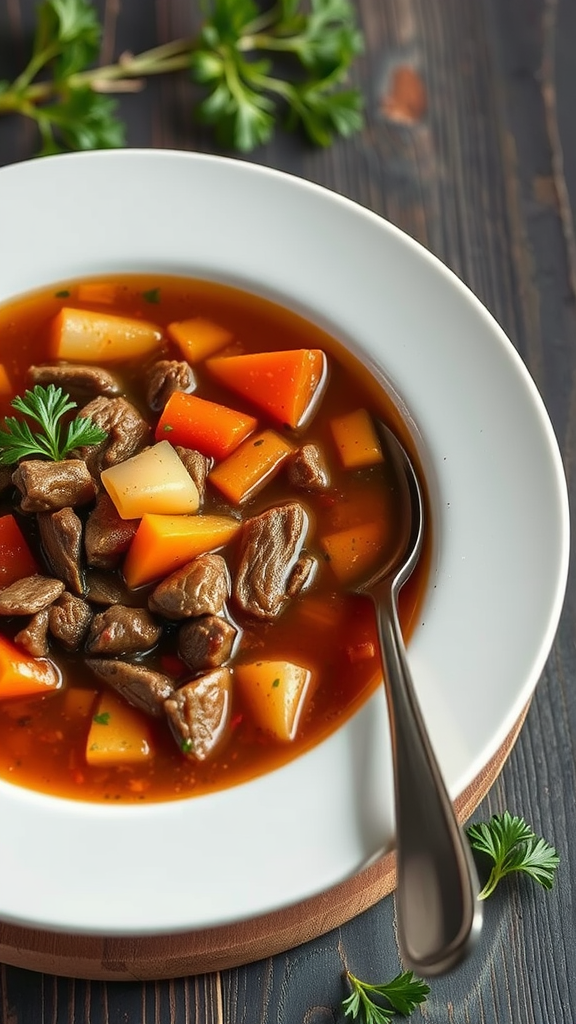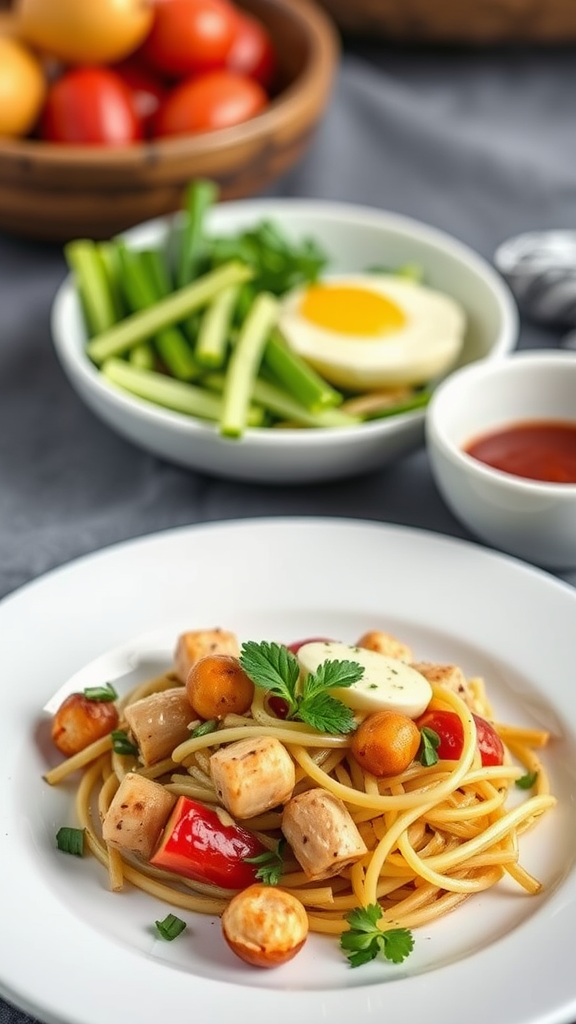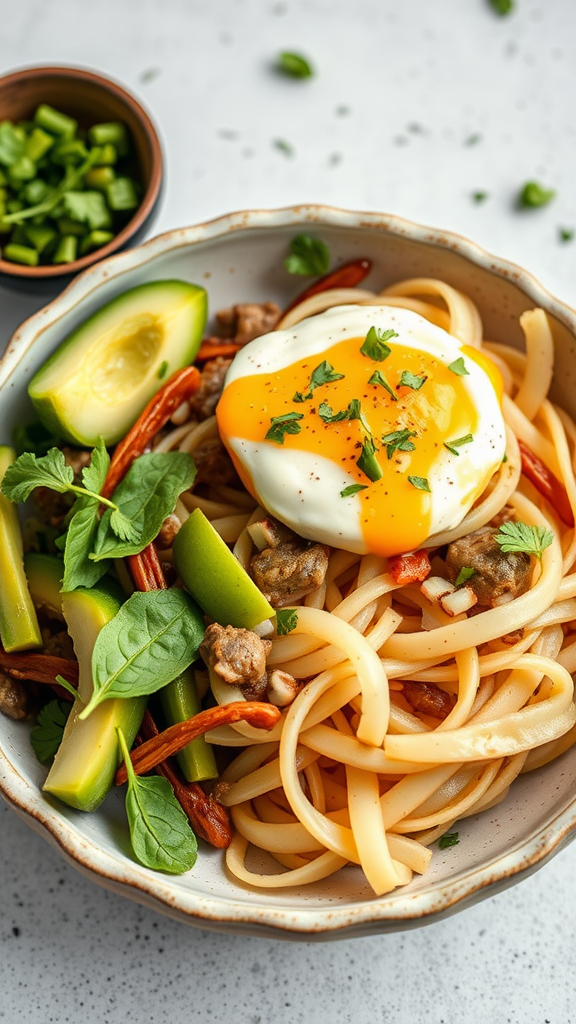Delicious Paleo Beef Vegetable Soup Recipe: A Step-by-Step Guide
Warm, hearty, and nutritious, Paleo beef vegetable soup is a fantastic meal that fits perfectly within a paleolithic lifestyle. Packed with a variety of vegetables and tender beef, this soup is not only delicious but also incredibly healthy. Below is a simple recipe you can follow to create this delightful dish right in your kitchen.
Ingredients You’ll Need
- 1 pound of grass-fed beef stew meat, cut into bite-sized pieces
- 4 cups of beef broth or stock (preferably homemade)
- 2 tablespoons of olive oil or coconut oil
- 1 medium onion, chopped
- 2 cloves of garlic, minced
- 2 carrots, sliced
- 2 stalks of celery, chopped
- 1 bell pepper, chopped (any color you prefer)
- 1 zucchini, diced
- 1 cup of green beans, trimmed and chopped
- 1 teaspoon of dried thyme
- 1 teaspoon of dried rosemary
- Salt and pepper to taste
- Fresh parsley for garnish (optional)
Instructions for Preparing Paleo Beef Vegetable Soup
Creating your own delicious soup is easy when you follow these step-by-step instructions:
Step 1: Brown the Beef
Start by heating the olive oil or coconut oil in a large pot over medium-high heat. Add the beef stew meat to the pot. Sprinkle a little salt and pepper on the meat. Cook it for about 5-7 minutes, stirring occasionally, until the beef is nicely browned on all sides. This step adds depth and flavor to your soup.
Step 2: Sauté Vegetables
Once the beef is browned, remove it from the pot and set it aside. Add the chopped onion and minced garlic to the same pot. Sauté for about 3-4 minutes until the onion becomes translucent. Next, add the carrots, celery, and bell pepper to the pot. Cook for an additional 5 minutes, stirring occasionally, until the vegetables are just starting to soften.
Step 3: Combine Ingredients
Return the browned beef to the pot, stirring it with the sautéed vegetables. Then pour in the beef broth, bringing the mixture to a boil. This rich broth will act as a flavorful base for your soup.
Step 4: Add Remaining Vegetables
Once the broth is boiling, add the chopped zucchini and green beans along with the dried thyme and rosemary. You can also adjust the seasoning with more salt and pepper, depending on your taste. Once combined, reduce the heat to low, cover the pot, and let the soup simmer for about 30 minutes. This simmering time allows the flavors to meld beautifully.
Step 5: Serve and Enjoy
After 30 minutes, your soup will be ready to delight your taste buds! Remove the pot from heat and give it a good stir. If desired, garnish each bowl with fresh parsley for an added touch of color and flavor. Serve the soup hot, and enjoy its robust, comforting taste that will make you feel great about what you’re eating!
Why You’ll Love This Recipe
This Paleo beef vegetable soup is not only easy to make but provides plenty of nutrients with every bowl. Since it incorporates a variety of vegetables, it’s an excellent way to sneak in vitamins and minerals while satisfying your hunger. Plus, it’s perfect for batch cooking. Make a large pot at the start of the week, and you’ll have delicious meals ready to go!
Storing Leftovers
If you have leftover soup, store it in an airtight container in the refrigerator for up to three days. For longer storage, you can freeze the soup in individual portions for a quick meal later on. Simply thaw in the fridge overnight and reheat on the stove or in the microwave.
By following this delicious Paleo beef vegetable soup recipe, you’re making a healthy choice that doesn’t compromise on flavor. Whether you’re on a paleo diet or just looking to enjoy a wholesome soup, this recipe is sure to satisfy your cravings!
Health Benefits of Eating Paleo-Friendly Soups and Stews
Paleo-friendly soups and stews are not just delicious—they offer a wealth of health benefits that support a wholesome lifestyle. When you choose ingredients that are fresh, natural, and free from processed foods, you’re making a wise choice for your health. These meals are perfect during colder months, but their benefits span across all seasons. Let’s explore how incorporating these dishes into your diet can enhance your well-being.
First and foremost, paleo soups and stews are packed with nutrients. By using fresh vegetables, grass-fed meats, and healthy fats, you create a dish that is teeming with vitamins and minerals. These nutrients are essential for maintaining energy levels and supporting your immune system. For example, leafy greens often found in these recipes, like spinach or kale, provide vital Vitamin C and iron. Root vegetables like carrots and sweet potatoes add fiber and beta-carotene, contributing significantly to your daily nutrient intake.
Another remarkable benefit is their high hydration content. Soups and stews are primarily liquid-based, which helps keep your body hydrated. Proper hydration is crucial for many bodily functions, including digestion and temperature regulation. When you’re well-hydrated, you’ll likely experience increased energy levels and improved cognitive function. You can make a hydrating bowl even tastier by adding herbs and spices, such as cilantro or turmeric, which not only boost flavor but also provide anti-inflammatory properties.
One of the key advantages of eating paleo soups is their potential for aiding digestion. Many traditional soups include ingredients that are easy to digest, like lean meats and cooked vegetables. Cooking vegetables softens their fibers, making them gentler on your digestive system. Additionally, you’re likely to find ingredients like bone broth in these dishes. Bone broth is rich in collagen and gelatin, both of which are beneficial for gut health and can help reduce inflammation in the digestive tract.
Let’s not forget about weight management. Paleo soups and stews can be hearty and filling while being lower in calories than many other meal types. By prioritizing nutrient-dense ingredients, you can feel satisfied longer, potentially reducing cravings for unhealthy snacks. A well-balanced soup can provide a perfect meal choice for those looking to shed a few pounds or maintain their weight. Consider incorporating hearty options like beef and vegetable soup, which can keep you feeling full while supporting your nutritional goals.
When you make your own soups at home, you have complete control over what goes in. This means you can easily avoid additives and preservatives that are often found in store-bought options. Reading labels can be confusing, and many products contain high amounts of Sodium and unhealthy fats. By preparing paleo-friendly soups, you ensure that every ingredient is wholesome and contributes positively to your health. You can also experiment with flavors and textures, making each batch unique and tailored to your family’s taste preferences.
An important aspect of a paleo lifestyle is maintaining a budget-friendly approach while still focusing on quality ingredients. Soups and stews are an excellent way to make the most of your grocery shopping. You can use less expensive cuts of meat, which can become tender in slow cooking, and take advantage of seasonal produce that is often more affordable. Leftovers from dinner can also make delightful lunches or can be frozen for future meals, reducing food waste.
Paleo soups and stews can be adapted for any dietary requirements as well. Whether you’re gluten-free, dairy-free, or following specific dietary guidelines, the flexibility of these recipes allows you to easily cater to your needs. You simply replace certain ingredients with alternatives that still fit within the paleo framework. This adaptability opens up a world of culinary options, ensuring you never get bored with your meals and always prioritize your health.
Paleo-friendly soups and stews into your weekly meal prep can lead to a richer, healthier lifestyle. From improving digestion to aiding weight management, the benefits are evident. You get to enjoy nourishing, delicious food that is achievable for everyone. As you explore different recipes, you’re not only treating your taste buds but also taking optimum care of your body.
Conclusion
Enjoying a hearty bowl of Paleo beef vegetable soup goes beyond mere taste—it’s a nourishing journey that supports your well-being. This recipe not only tickles your taste buds but also serves as a fantastic introduction to the abundance of wholesome ingredients that fit into a paleo lifestyle. The step-by-step guide makes it easy to whip up a comforting meal packed with lean protein, fresh vegetables, and nutrient-dense flavors. You’ll find that each spoonful offers a delightful blend of textures and flavors, making it a favorite for both family dinners and meal prep for the week.
Paleo-friendly soups and stews into your diet provides numerous health benefits. These dishes are rich in vitamins and minerals, thanks to the variety of vegetables included. They are also naturally low in carbohydrates while supplying high-quality fats and proteins—perfect for maintaining energy levels and supporting muscle growth. Additionally, warming soups can aid in digestion, keep you hydrated, and help with weight management since they are satisfying without being heavy.
To embrace a paleo lifestyle, making this beef vegetable soup can be one of the simplest yet most rewarding choices. It delivers flavors that comfort and heal, allowing you to explore the culinary landscape of clean eating. Next time you’re looking for a nutritious meal that’s quick to prepare, remember the delicious possibilities that a paleo beef vegetable soup can bring to your table. Your body and taste buds will thank you for it!





Leave a Reply